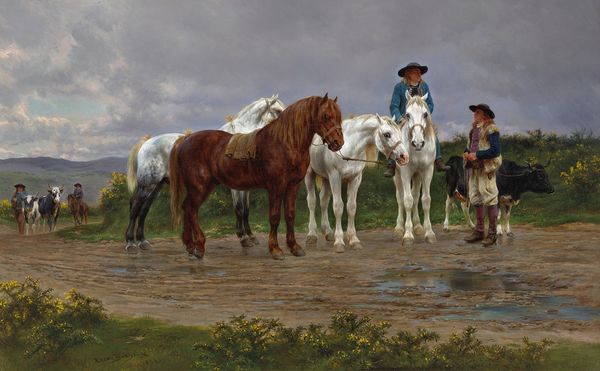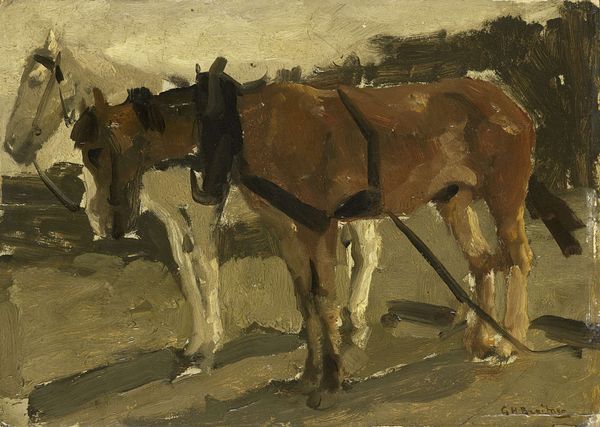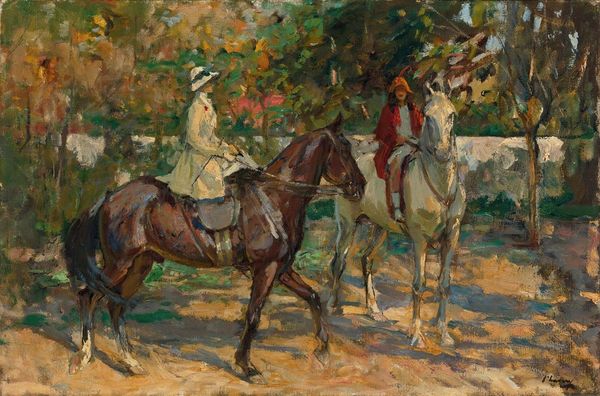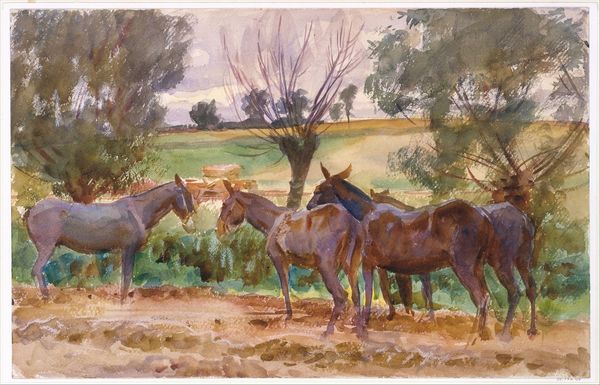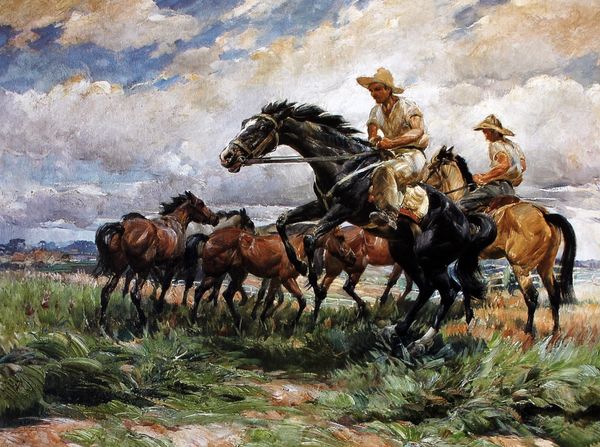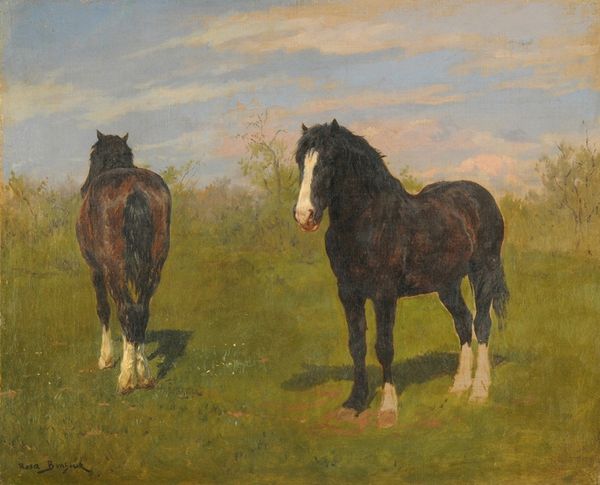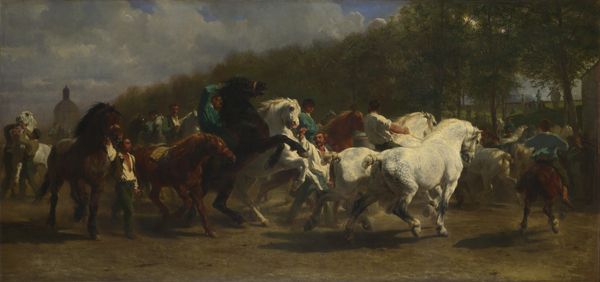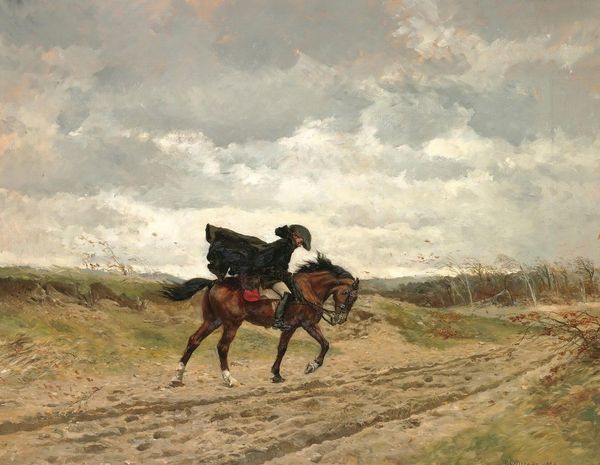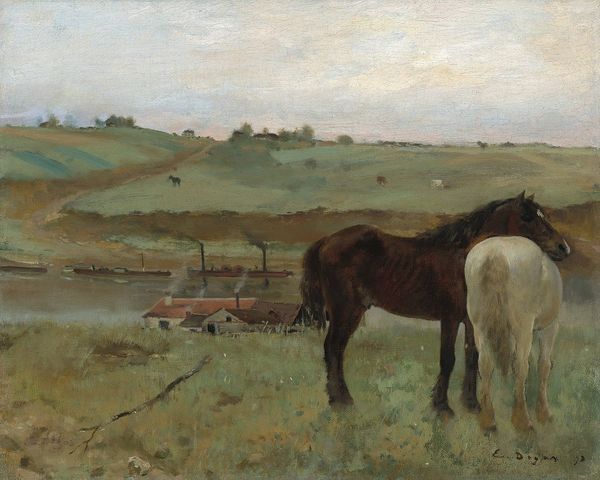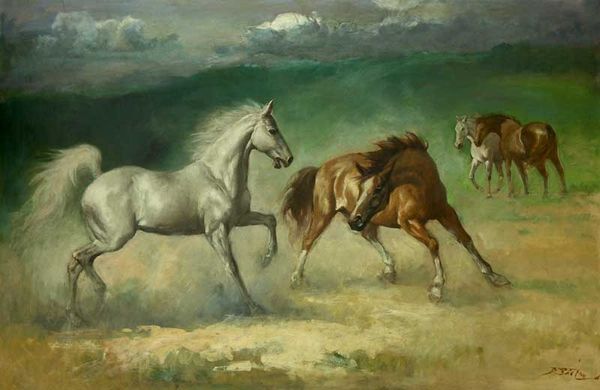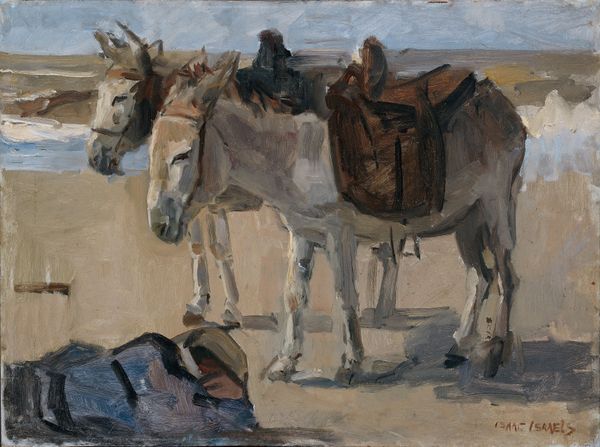
Copyright: Public Domain: Artvee
Curator: This piece gives off such a restful impression; the muted palette creates a sense of stillness despite the subject. Editor: Indeed. What we’re looking at is “Relay Hunting,” a genre painting from 1887 by Rosa Bonheur. It’s an oil-on-canvas work depicting three horses at rest with a huntsman beside them in a very natural, plein-air setting. Curator: It's remarkable how she captures the individuality of each horse. The symbolic weight of horses as representations of power and freedom, a recurring theme throughout history, is certainly here. And given that it's by a female artist known for depicting animals, one has to wonder about gender and control embedded in these power dynamics. Editor: Good point. Bonheur's life was rather fascinating and very much a challenge to norms. I believe she obtained police permission to wear men’s clothing so she could freely visit farms and slaughterhouses for her art. The reception to her work has, of course, changed over time along with societal shifts and art market trends. In her lifetime, she achieved huge international fame, while today, some consider her paintings academic and conventional, overshadowed by avant-garde movements. Curator: Interesting how perception evolves. Beyond art history, it would be fruitful to examine equine symbolism itself: the colour of the horses alone is suggestive. For example, the white horse frequently carries associations of purity and even triumph, or power legitimized and ordained. The symbolism becomes richer when contextualized within the hunt itself. Editor: True. Thinking about the political implications of hunting culture, particularly in 19th-century Europe when land ownership and aristocratic power were frequently expressed through elaborate hunts, I find it fascinating how Bonheur, as a woman artist, enters this masculine sphere. Was she celebrating it, critiquing it, or simply observing? I think we tend to read things differently today, especially given considerations around animal rights, versus then. Curator: The landscape and composition seem arranged almost allegorically. Even the way the hunter seems to defer to them lends to a subtle narrative suggesting change, wouldn’t you agree? Editor: Absolutely, and it's an example of art's role in subtly challenging norms while portraying them. Food for thought, indeed. Curator: A truly thought-provoking piece offering many layers to consider.
Comments
No comments
Be the first to comment and join the conversation on the ultimate creative platform.
